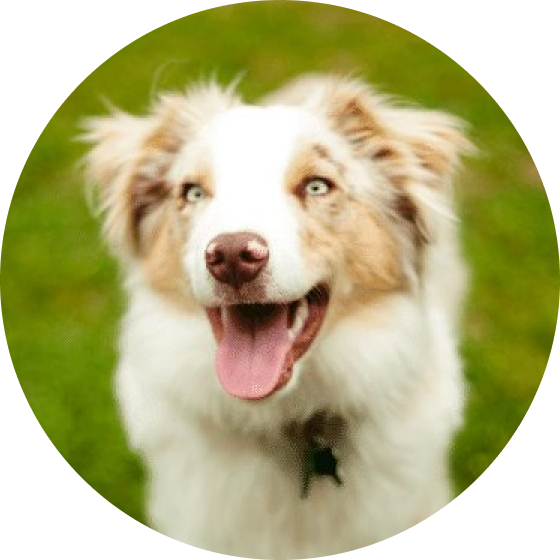16 Types of Shepherd Dogs
August 13, 2021 2023-10-27 11:57
16 Types of Shepherd Dogs
Let's Dive Into Shepherds
Hi, I’m Steffi Trott, lead dog trainer at SpiritDog Training. Did you know that shepherds or sheepdogs come in all shapes and sizes and are often classified as herding dogs by the American Kennel Club? Check out the information below to find out which would be the best dog for you and your family. Plus, take a look at some of the popular training courses we offer online at SpiritDog Training to help shepherd owners tackle common behavioral challenges they face with these highly intelligent breeds.
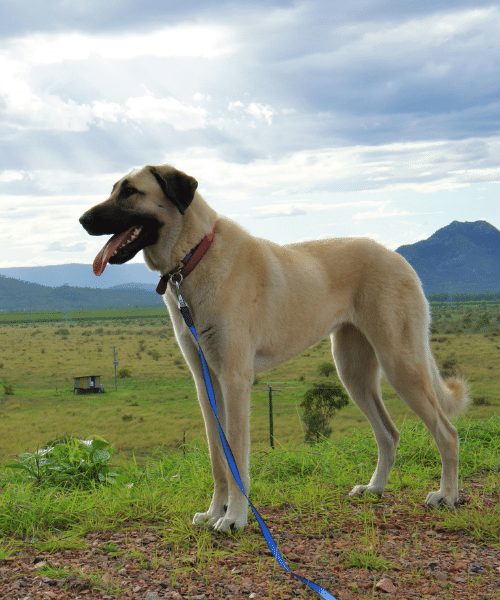
Anatolian Shepherd
Although not a true herding dog, this independent and ancient breed was developed to guard livestock and protect them against predators.
Over 2,000 years later, they’ll still prove themselves exceptional at the task, and are used throughout the US to guard flocks of sheep and protect them against endangered predator species.
A large dog breed, the Anatolian Shepherd dog is extremely independent, and needs owners that are “willing and able to handle a dog as dominating and demanding as he is calm and loving.”
An Anatolian Shepherd will protect its flock, family, children, and pretty much anything else with “fierce possessiveness.” While not aggressive, he may respond to strangers with suspicion and tends to be reserved rather than playful like the Collies for instance.
Clever and devoted, Anatolians can be strong-willed and need high fences and lots of supervision. Not suited to first-time owners, Anatolians are popular enough that you’ll find reputable breeders throughout the US but you should be prepared to pay around $1,700 or more for a puppy.
Anatolian Shepherds are intelligent, fast-learning dogs; however, they require consistent and effective training to become well-mannered companions. Begin training your Anatolian Shepherd today with our proven, science-based, online dog training courses here.

Australian Kelpie
A loyal and intelligent dog, the Australian Kelpie is an instinctive herder with seemingly limitless energy. That’s hardly surprising as the “breed originated from Collie type dogs imported from Scotland.” Relatively low-maintenance, Kelpies need a lot of exercise and, without it, may start trying to herd your children around the house, which may not be an entirely bad thing, depending on circumstances.
Kelpies have a strong work ethic and excel at sports like agility and obedience. Without physical and mental stimulation, however, they can become bored and hyperactive, and even start venting their frustration with destructive behaviors.
A little on the stubborn side, Kelpies also need extensive socializing so they become accustomed to a range of situations, sights, and sounds. They are naturally cautious animals and “their instincts make them wary of strangers” so proper socialization is vital.
A medium-sized dog with few health issues, the Kelpie is hardy and easy to keep, although it does shed quite heavily once a year. While not particularly common nor suited to first-time owners, Kelpies aren’t that difficult to find, especially if you don’t mind adopting a mixed breed.
Australian Kelpies are highly trainable, eager to please, and loyal, but may be tough to keep in the average household because of their physical needs. Begin training your Australian Kelpie today with our proven, science-based, online dog training courses here.
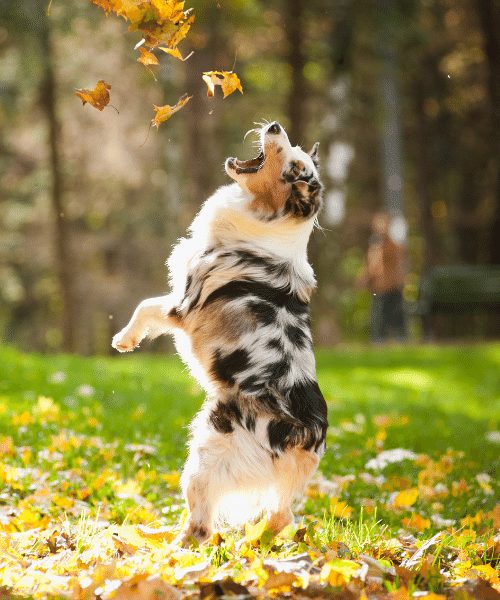
Australian Shepherd Dog
Affectionate and eye-catching, the Australian Shepherd dog is as adept at guarding livestock as it is herding it.
One of the smartest breeds of dogs, Australian Shepherds are easy to train and fit well into an active family lifestyle. They’ll accompany you wherever you go – running alongside a bicycle, hiking in the mountains, or just herding your kids around the yard.
Like the Kelpie, the Australian Shepherd dog is high-energy and not suited to living in small spaces. Ideally, you need a yard where he can stretch his legs for a couple of hours each day, as well as the time available to train and exercise him on top of that.
As intelligent as it is, the Australian Shepherd dog enjoys learning tricks or taking part in dog sports like agility and herding trials. Endlessly loyal, the Australian Shepherd is a little more high-maintenance than the Kelpie. With its long, thick coat, it needs regular grooming, especially when shedding.
This breed is also prone to developing hereditary eye diseases and other health conditions, including “nasal dermatitis, hip dysplasia, and epilepsy.”
More popular than the Kelpie, finding a well-bred Australian Shepherd puppy from a reputable breeder is relatively easy if not particularly cheap and you should expect to pay anywhere between $600 and $3,000 depending on quality and bloodlines.
Australian Shepherds are brilliant, devoted, and playful dogs. These dogs have high energy and get bored easily, which is why they need an owner who can put their brains and energy to good use. Begin training your Australian Shepherd today with our proven, science-based, online dog training courses here.

Beauceron
The Beauceron is a working dog breed from France. Although initially developed to hunt wild boar, “it also became useful as a herding dog and guardian of the flock.”
Like the Briard, the Beauceron is originally from Brie, just like the cheese, and makes a wonderful companion despite its “imposing and powerful” appearance.
Confident, watchful dogs, the Beauceron makes a great family protector, but only in a household where there is a consistent and confident handler, otherwise, they may end up controlling everything and everyone.
Like any other herding dog, the Beauceron needs lots of exercise and mental stimulation. They excel at a range of dog sports, making use of their natural tracking, obedience, and protection skills.
The short-haired coat makes for a low-maintenance dog, but not one that will settle easily into a first-time owner’s home. They prefer living outside as well, so will do better on a farm or house with a large yard.
Not particularly easy to find, Beaucerons are distinguished-looking dogs that are both powerful and athletic. There are around 10 breeders listed by the American Kennel Club but you might have to put your name down on a waiting list if you’ve fallen in love with the breed.
Beaucerons are a protective and watchful breed. They need a confident and consistent owner with training experience. Begin training your Beauceron today with our proven, science-based, online dog training courses here.
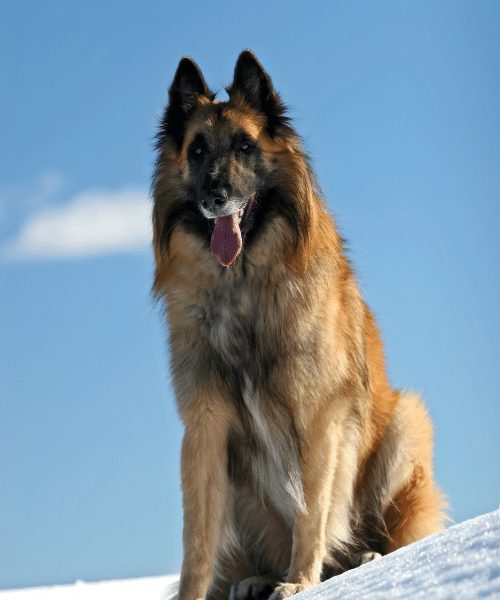
Belgian Shepherd Dogs
There are four different varieties of Belgian Shepherd dogs all of which share similar origins, descending from “a common type of shepherd dog found throughout Western Europe.”
The four varieties are:
- The black, long-haired Belgian Groenendael, also known as the Belgian Sheepdog.
- The rough-coated Belgian Laekenois.
- The Malinois with its short coat and distinctive black mask.
- The long-coated Tervuren.
All types of Belgian Shepherd dogs are intelligent, agile, and athletic but they can also be challenging to live with. They become bored easily and require a lot of physical exercise and mental stimulation to prevent them from developing obsessive or destructive behaviors.
Unlike some other breeds of herding dogs, Belgian Shepherds have a higher-than-normal prey instinct and are prone to chase after anything that moves.
If you can channel their natural athleticism and intellect, any of the Belgian Shepherd breeds will prove adept at various dog sports. The Malinois, in particular, “is a top-notch competitor in protection dog sports like Schutzhund and ring sport”.
All types of Belgian Shepherd are bred in the US, although the availability of Laekenois Shepherd dogs seems more limited than the other varieties. You should budget at least $1,500 for a Belgian Shepherd puppy of any type, and a little more for a pedigree Malinois.
Belgian Shepherds have strong protective and territorial instincts and require a lot of physical exercise. Begin training your Belgian Shepherd today with our proven, science-based, online dog training courses here.
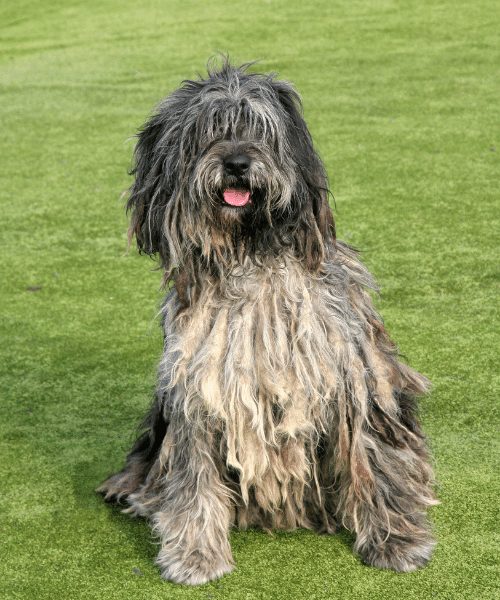
Bergamasco Sheepdog
They may not be as well known as some of the other shepherd breeds, but the Bergamasco Sheepdog has a lot going for it. Lower maintenance than many other similar breeds, the Bergamasco is also “robustly healthy,” eager to please, and highly intelligent.
Bred to herd and protect sheep on the Italian Alps, the Bergamasco has a unique coat made up of three different textures. Designed to “protect him from the bitter cold of high altitudes” and “sharp-toothed, razor-closed predators,” a Bergamasco’s coat forms loose mats known as flocks, giving him a distinct appearance.
An adult’s coat is “basically maintenance-free” and hypoallergenic. Furthermore, Bergamasco’s friendly temperament and adaptability make it ideal for senior citizens and families with small children. The Bergamasco is an independent thinker, however, so isn’t ideal for first-time owners, despite their willingness to please.
Unlike many of the herding dogs, Bergamascos are content with a moderate amount of exercise, preferring mutual activity rather than exploring the yard on his own. A social breed, the Bergamasco is prone to separation anxiety, although you can overcome this with proper training and socialization.
Bergamasco Sheepdogs, most known for their matted mop-like coats, are patient, attentive, and gentle. Begin training your Bergamasco Sheepdog today with our proven, science-based, online dog training courses here.
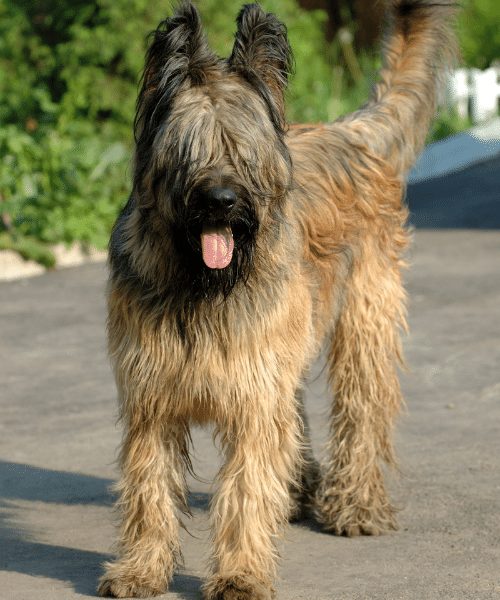
Briard
This large, long-haired breed shares its origins with the Beauceron and like them, are high-energy animals with an unstoppable zest for life. Mental exercise is as important to these energetic dogs as regular physical workouts and “novice owners might be overwhelmed by their work drive”.
Not suited to life indoors, the Briard needs a large yard to explore to satisfy his wanderlust. Briards love human companionship and make “great companions for hikers, bicyclists, and joggers.”
While their long coat gives them an adorable appearance, it needs regular grooming, making the Briard comparatively high-maintenance. Extremely intelligent, the Briard is quick to learn and has excellent memories. This can either be a blessing or curse, depending on how adept you are at keeping your training sessions interesting.
If not well-socialized early on in life, the territorial Briard can become aggressive towards strangers and other animals so need a firm hand and plenty of exposure to different social situations.
Not many Briard come up for adoption and there are only a handful of breeders in the US so be prepared to spend some time on a waiting list if you want one to share your life with.
Briards are beautiful dogs that are devoted to their family. In order to turn them into great companions, they require consistent socialization and training. Begin training your Briard today with our proven, science-based, online dog training courses here.

Bouvier des Flandres
Another shepherd dog with French origins, the Bouvier des Flandres is so much more than just a herding dog. Capable of doing “anything that needs doing in a barnyard or pasture except milk the cows,” Bouviers are loving, loyal, and keenly intelligent.
With their impressive work ethic, Bouviers are happiest when kept busy and benefit from having a job to do. They make excellent watchdogs but need plenty of space to romp around in.
Naturally protective of their owners, Bouviers are generally good-natured and sociable. As a consequence, they are also prone to separation anxiety and may become destructive if left alone for long periods.
Bouviers need early socialization to prevent aggressive tendencies from developing but a trip to the dog park probably isn’t the best idea initially, as “his commanding and dominant presence” may intimidate other dogs, causing conflict.
Developed to think for himself, the Bouvier doesn’t respond to instructions with the same immediacy as, say, a Border Collie or German Shepherd, and will process the information and figure out the solution before reacting.
The long coat of Bouvier makes it high-maintenance in the grooming department and daily brushing is necessary to prevent tangles and knots from developing.
Bouvier des Flandres are often referred to as “gentle-giants” with a great worth ethic that make them great watchdogs and guardians. Begin training your Bouvier des Flandres today with our proven, science-based, online dog training courses here.

Collies
Like the Belgian Shepherd, Collies come in a variety of shapes and sizes, although, in the US, the name is most commonly associated with the long-haired Rough Collie or Lassie dog.
The Rough Collie “is a large but lithe herder,” while the smaller Border Collie is what most people think of when they think of shepherd dogs. The Bearded Collie looks more like an Old English Sheepdog with its long coat and “shaggy dog” appearance.
Regardless of type, Collies are energetic, fun-loving creatures, although the Border and Bearded breeds generally require more exercise. The Rough Collie has a more laid-back approach to life, being “ready to go when it’s time to go, and able to chill when it’s time to chill.”
Over and above everything else, “what Collies need most is a great deal of personal attention”. They love human company and are liable to suffer from separation anxiety and become bored and destructive if left alone for too long.
Although the Rough and Bearded collies are suitable for novice owners, the “highly sensitive, independent thinking” Border Collie requires a more experienced home. All three types have loving and loyal personalities but can also be timid, making early socialization is a must.
Collies are sweet, friendly, and gentle, making this breed a perfect family dog and especially great with kids. This breed is equipped with an instinct to work and responds well to training. Begin training your Collie today with our proven, science-based, online dog training courses here.
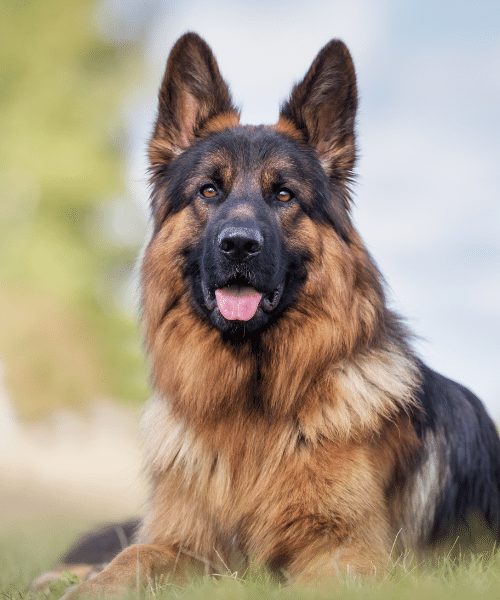
German Shepherd Dog
One of the most popular dog breeds in the US, the German Shepherd dog needs little introduction. German Shepherds make excellent companions and good family dogs and are used extensively in search-and-rescue and drug detection operations. Military and police use these dogs in their work, often outfitted with tactical dog gear.
Intelligent and willing, the German Shepherd can turn its paw to virtually any task, given the right training. As a result, they will excel at almost any sport, from dock diving to Schutzhund, making them ideal for an active family.
Excellent watchdogs, German Shepherds are patient, gentle family dogs, but “does not lend itself to immediate and indiscriminate friendships.” It is important to realize this breed tends to shed profusely year-around.
Finding a German Shepherd breeder isn’t difficult, but finding the right one may be. Those producing working lines focus on developing “high-drive temperaments.” These dogs are great for competitive sports but may struggle with being a family companion.
Similarly, highly-bred German Shepherds destined for the show ring are often “hyperactive, skittish, spooky, or downright dopey.” Find a more generalized breeder whose focus is on temperament and trainability and you’ll find yourself a family-friendly German Shepherd.
The popularity of this breed seems to have made it more affordable and, “according to NextDayPets, the average price is $800 for a dog that’s bred to be a family pet.” A well-bred dog from health-tested parents can cost a lot more though!
German Shepherds can come in many colors besides the traditional black and tan. Even pure-white and pure-black German Shepherds are born at times!
While they are known for their classical alert look with erect ears, some German Shepherds actually have one or two floppy ears all the way into adulthood.
German Shepherds are courageous, loyal, and confident. To turn them into a great companion they require ongoing training and socialization. Begin training your German Shepherd today with our proven, science-based, online dog training courses here.
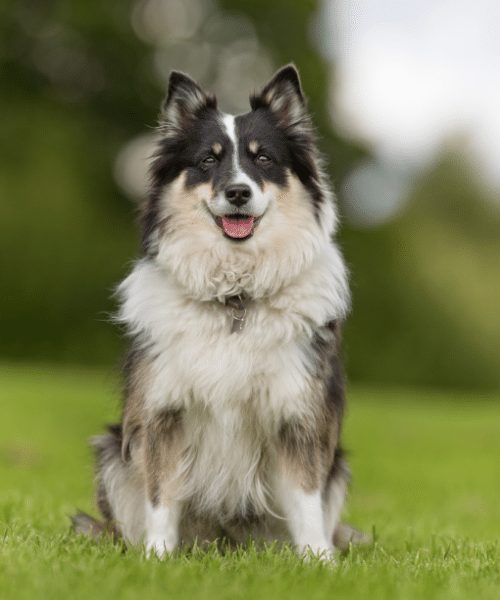
Icelandic Sheepdog
I’d never heard of an Icelandic Sheep Dog before today but this breed is enjoying plenty of interest in the US, jumping up 24 spots on the American Kennel Club’s Most Popular Breeds List in 2019.
The only dog native to Iceland, the Icelandic Sheepdog is a friendly, small-to-medium breed and “all-round herder.”
With its dense coat, a bushy tail, and pointed ears, it resembles a fox but its character couldn’t be more different. The Icelandic Sheepdog is cheerful, affectionate, and “likely to be your kids’ best friend.”
Their high energy levels mean they’re not suited to apartment life, but with plenty of exercise and a couple of kids to play with, they’ll be happy as well as hardy.
Icelandic Sheepdogs get along with other animals, as well as kids, and lack the prey drive that could see them mistaking your daughter’s pet hamster for a passing snack.
Icelandic Sheepdogs have a thick, double coat and shed a fair amount, so daily brushing will likely be in order. They are generally healthy dogs, however, and easy to train, although they “don’t respond well to harsh corrections or training methods.”
Given their suitability as family companions, it’s hardly surprising that Icelandic Sheepdog can be pretty hard to find. If you want one, you need to save up about $1,000 and put your name down on a waiting list.
Icelandic Sheepdogs are lively, friendly, playful and love being at the heart of the family. This breed doesn’t like to be left alone at the house for long periods of time and is best suited for an active family. Begin training your Icelandic Sheepdog today with our proven, science-based, online dog training courses here.
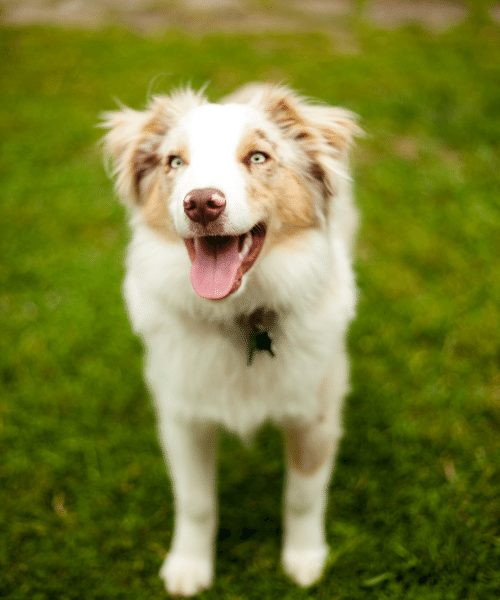
Miniature American Shepherd
Resembling the Australian Shepherd, the Miniature American Shepherd stands a few inches shorter than its antipodean cousin but has similarly eye-catching coloration.
Energetic and tough, the Miniature American Shepherd has a natural “affinity for horses,” and became “popular with equestrians traveling to horse shows, as their intelligence, loyalty, and size made them an excellent travel companion.”
Like most shepherd dogs, the Miniature American has a keen eye and “watchful expression.” Highly intelligent and willing to please, these dogs adapt well to city life, providing they get enough exercise, and excel in canine events like agility, obedience, and tracking.
Frequent shedders, Miniature Americans need regular grooming to keep them looking good. On the plus side, they’re patient and gentle with children and make excellent fitness companions.
The American Kennel Club has pages of Miniature American Shepherd breeders so finding one shouldn’t be a problem, as long as you’ve got a thousand dollars or two to spare. It’s rare to find a Miniature American Shepherd up for adoption, which is a testament to how lovable they are.
Miniature American Shepherds are bright, have big personalities and are great with children. On the smaller side of herding dogs, they can be more manageable in a home. Begin training your Miniature American Shepherd today with our proven, science-based, online dog training courses here.
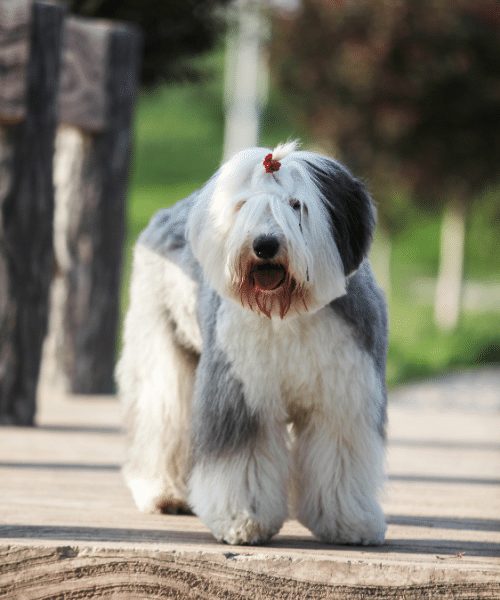
Old English Sheepdog
I’ve always wanted one of these big, bearlike dogs but am reluctant to invest in a dog that weighs more than I do! They are endlessly good-natured, surprisingly agile, and famous for their numerous “house-dog qualities: watchfulness, courage, kindliness, and intelligence.”
With all that fur, however, Old English Sheepdogs are the epitome of high maintenance and, if you’re not prepared to commit to weekly grooming sessions, you may find it’s not the right breed for you. It’s certainly one reason that puts me off.
On the other hand, Old English Sheepdogs don’t just look adorable – they are. Affectionate and fun-loving, they fit into family life seamlessly and don’t mind living in small spaces, as long as they get enough exercise. Even then, they don’t need the kind of high-energy, mentally stimulating exercise that a Kelpie might, and have an off-switch that few other herding dogs have access to.
Experienced breeders recommend training Old English Sheepdogs at an early age and never allowing “your puppy to do something that you would not want a large, shaggy, wet, possibly muddy dog doing in your house.”
Old English Sheepdogs aren’t the healthiest of breeds and can be prone to “hyperactivity, fearfulness, and aggression,” so make sure you only source a puppy from a reputable breeder.
Old English Sheepdogs are sweet, social and gentle, but will require daily exercise. Begin training your Old English Sheepdog today with our proven, science-based, online dog training courses here.
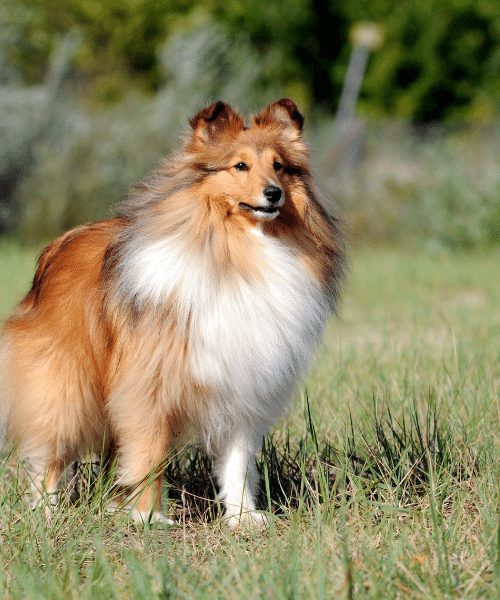
Shetland Sheepdog
Similar in appearance to the Rough Collie, the brown and white, long-haired Sheltie originated on the Shetland Isle, off the coast of Scotland. Bred to keep “hungry birds and sheep out of the farmer’s garden,” they double up as great watchdogs and family companions.
Easy to train and adaptable to city life, the Shetland Sheepdog is suitable for novice owners and ideal for families. They also excel at agility, obedience, and herding trials.
Shetland Sheepdogs are loyal with a protective nature and are “quick to bark if they sense that anything’s amiss in their territory.” Early puppy training can stop the barking from becoming a nuisance while maintaining the dog’s role as a reliable watchdog.
A strong herding instinct means Shelties are prone to nipping as they attempt to chivvy along everything from squirrels to small children. Again, early training can resolve this unwanted behavior.
A relatively independent spirit means the Shetland Sheepdog is happy left to its own devices and this breed doesn’t usually suffer separation anxiety as long as you give them plenty of attention when you are at home.
Shetland Sheepdogs are highly intelligent, vocal and is a bit reserved by nature. With their beautiful double coat, they will shed heavily and more so during seasons like spring and fall. Begin training your Shetland Sheepdog today with our proven, science-based, online dog training courses here.

Welsh Corgi
While they don’t look like your average shepherd dog, both the Cardigan and the Pembrokeshire Welsh Corgi were bred as herders and remain “one of the world’s most popular herding breeds.”
Made famous by the Queen of England, these pocket-sized pups are secretly “tough working dogs.” Tolerant, hardy, and versatile both types of Welsh Corgi are low-maintenance and good for novices. They enjoy exercise but aren’t built to keep up with a horse or bicycle.
Like most shepherd dogs, the Corgi “is happiest when he has a job to do, but he’s also adaptable enough to fit in with an active family lifestyle. His herding instinct will make him prone to nipping, but early puppy training can prevent this unwanted behavior.
Despite their short coats, Corgis are consistent shedders and benefit from weekly grooming. Corgis are independent yet sensitive little dogs so react better to “positive, reward-based training.”
Although bred as herders, Corgis have always been versatile and “were treasured as cattle dogs, guardian dogs, family pets, and vermin exterminators”.
Need a pocket Corgi? The Miniature Corgi fits the bill. Their small size and adaptability make them suitable for apartment living, providing they get enough exercise and attention.
Welsh Corgis are friendly, energetic and tend to have a “large-dog mentality in a medium-sized body.” Begin training your Welsh Corgi today with our proven, science-based, online dog training courses here.
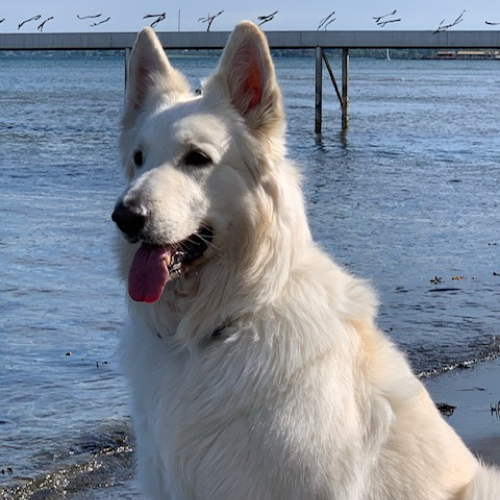
White Swiss Shepherd Dog
The White Swiss Shepherd Dog (also called Berger Blanc Suisse) was bred in Switzerland by White Shepherds imported from Canada. The White Shepherds themselves were bred by white German Shepherds (a rare, and often disliked, color of the German Shepherd).
With a similar look to German Shepherds in their size, coat and general appearance, it’s important to note that the Swiss Shepherd are not albinos, as evidence by their dark noses and eye rims.
Swiss White Shepherds can be hard to come by in the US. They are most prevalent in their country of origin and neighboring European countries. Expect to pay around $1,300 for a puppy from health-tested, well-bred lines.
Swiss Shepherds are very active, athletic, and trainable dogs. They tend to be less aloof with strangers than German Shepherds. Their general disposition is very friendly. Begin training your White Swiss Shepherd today with our proven, science-based, online dog training courses here.
Popular SpiritDog Training courses other
Shepherd owners have purchased:

Tackling Reactivity Online Bundle
$ 49 Learn More
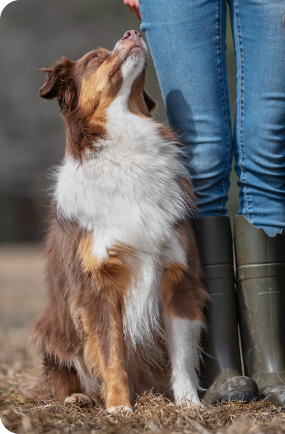
Just Listen Online Course
$ 149 Learn More
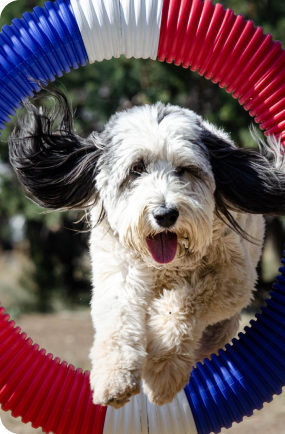
Dog Tricks Online Course
$ 29 Learn More
What Is The Best Shepherd Breed?
Most shepherd breeds are intelligent, active dogs that require an experienced owner. Few are suitable for first-time homes and we recommend considering the following questions before deciding on a Shepherd breed:
- Do you have an active lifestyle?
- Are you prepared to groom your dog weekly?
- Do you have children, or other pets, that your dog will need to socialize with?
- Will you be at home during the day?
- Do you want a dog for protection, as a companion, or both?
If you’re looking for a dog to compete with, a Collie or German Shepherd dog is an excellent choice. If, on the other hand, you’re looking for a family companion who doesn’t mind the city life, the Miniature American Shepherd is a better option.
Whatever kind of shepherd dog you opt for, make sure you’re committed to fulfilling his needs throughout his life, and you’ll be richly rewarded.
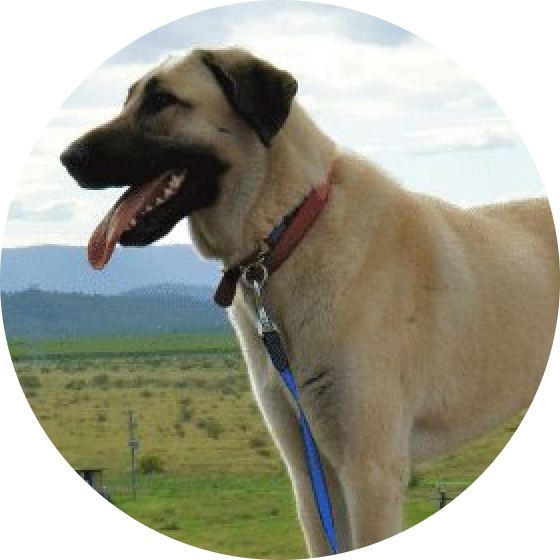
What is the largest Shepherd dog breed?
The Anatolian Shepherd stands at 27 to 29 inches and weighs around 150 pounds, making it the largest of all the shepherd dog breeds. Second place is a close-run battle between the Beauceron, who stands up to 27.5 inches and weighs between 70 and 110 pounds, and the similarly-sized Bouvier des Flandres.
What Shepherd breed is the smallest?
Although I was certain this would be either the Cardigan or Pembrokeshire Welsh Corgi, it turns out it’s the Miniature American Shepherd who, at 14 to 18 inches tall, is a couple of inches shorter than either of the Corgis and the diminutive Icelandic Sheepdog.
